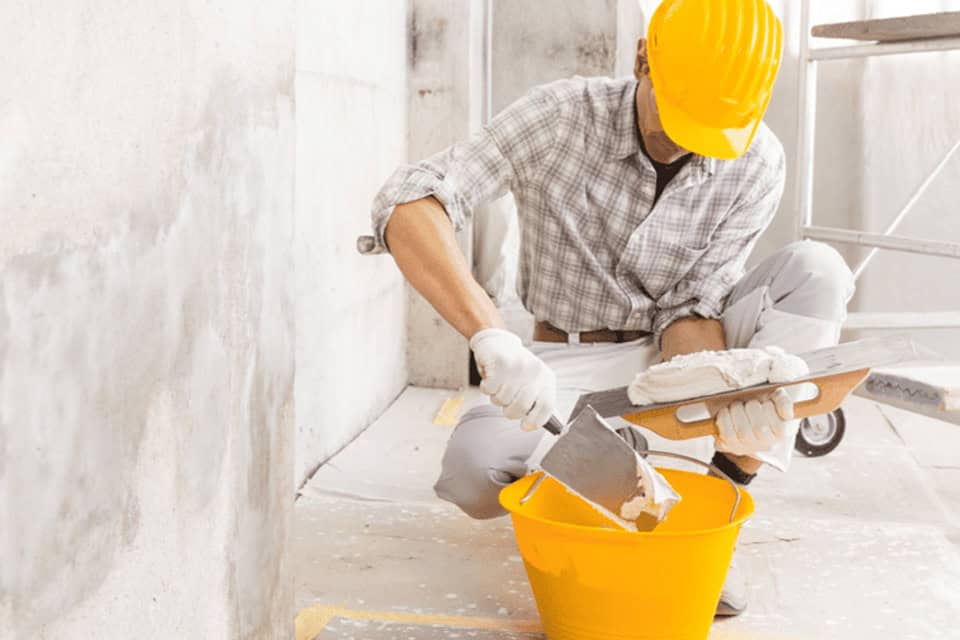Fire Resistant Plaster: Enhancing Safety in Building Design
Builders are increasingly turning to innovative materials to enhance fire resistance. A material gaining prominence is fire resistant plaster. For this feature, we discover how this plaster provides a robust defence against the devastating effects of fire.


How to Calculate Your Plasterboard Needs
There are a few steps in the calculations necessary to ensure you order the correct amount you need. The first step is determining the square metres:
How to Calculate the Square Metres
The square metres of your area can be easily calculated by measuring the height and width of each wall or ceiling area. Take a tape measure and carefully determine these two measurements, then simply multiply them together.
For example, if you have a ceiling area that is 5 metres x 10 metres - the final area that you need to cover is 50 square meters.
You will have to add the square metre calculations from all of the walls or ceilings together to get the final measurement. The next step is to figure out the number of boards you will need for your installation.
How to Calculate the Number of Plasterboards You Will Need
To determine the number of plasterboards required to cover your wall or ceiling you need to take the height and width of the boards and then multiply them together - before dividing this number by the square metres you want to fill.
For example, if you have boards that are 3.6 metres x 1.2 metres the number is 4.32 - so if you have an area of 100 square metres you would need 24 boards.
The calculation on how much plasterboard you will need should also always factor in wastage. 10% is a good general rule, but to be cautious you could get 15% more plasterboards. Taking your board number, you can now calculate for board waste.
How to Calculate Waste When Plasterboarding
The final part of your calculation is all about making sure you don’t run out of boards during the installation process, as you will need to allow for offcuts etc..
For example, 10% of 24 is 2.4 - so an extra 3 boards will make sure there is enough for any offcuts, damage or other unforeseen issues.
Waste is a natural part of construction and this means you will always have excess material due to offcuts. Calculating your requirements correctly beforehand, however, means you can reduce waste and also ensure you have enough material to complete the project successfully.
Top Tips for Figuring Out the Square Metres for a Wall or Ceiling
You should always use an accurate measure to precisely calculate the height and width of the area. You can either use a traditional tape measure, or there are laser measures available which are especially helpful for measuring large spaces.
Another essential builder’s tip is the old adage ‘measure twice, cut once’. This is particularly important for tricky ceiling spaces in older buildings - as they are often less uniform than more modern structures.
How Much Plasterboard Adhesive Do You Need?
When you are using the dot and dab method of fixing your boards, which is common for walls but not for ceilings, you will use a large amount of plasterboard adhesive - depending on how many boards you are fitting with this method.
Most manufacturers of adhesives will have a guide on the side of the bag that estimates how many boards their adhesive can cover. For example, British Gypsum’s Gyproc DriWall Adhesive covers approximately two boards per bag.
To calculate how much plasterboard adhesive you need, take the number of boards you have and divide it by the number of boards each bag can cover.
When calculating how much plasterboard adhesive you need you will also need to factor in adhesive wastage.
Does the Thickness of a Plasterboard Matter?
No. When determining how much plasterboard you need there may be worries about the thickness of your boards, especially if you are using very thick plasterboards - such as those for fire resistance. However, this is of no real consequence to the calculation of how much plasterboard you will need. Nonetheless, thicker fire resistance might have an impact on your floor space.
Top-Notch Ready Mixed Plaster for Your Projects
Our premium range of fire resistant ready mix plaster products is designed to enhance the safety and integrity of various building structures. Our fire resistant plasters are formulated with advanced materials that provide superior fire protection. These ready mix solutions are easy to apply and deliver consistent performance.
Building Materials Nationwide welcomes trade customers to open trade accounts. Unlock a host of benefits from competitive trade prices to fast UK delivery. Also, enjoy personalised support from our dedicated account management team. Gain a reliable supply chain for all your building material needs, including our high-quality plasters. Spend 2 minutes signing up today or contact us to find out more.
More like this
- Your Best Options for Stud Wall Insulation
- Loft Insulation Installation: Trade Tips and Common Mistakes
- Everything You Need to Know About Foam Board Insulation






